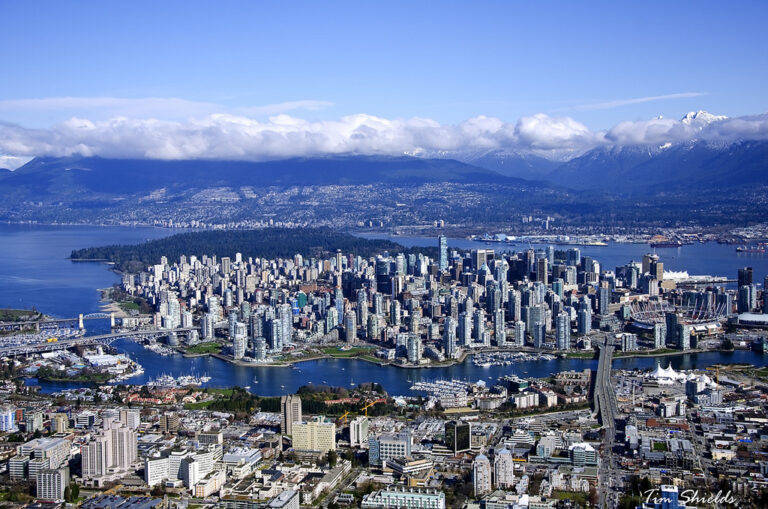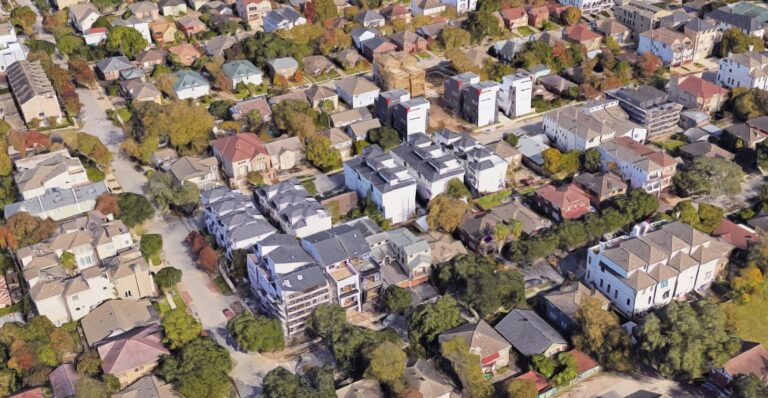Physical Address
304 North Cardinal St.
Dorchester Center, MA 02124
Physical Address
304 North Cardinal St.
Dorchester Center, MA 02124
I just spoke at a conference at Fordham on market urbanism and how it is similar to (and different from) new urbanism. The speech can be found here.
First of all, Jacobs observed that the artist abstracts from life, with all its “inclusiveness” and “literally endless intricacy.” Many architects, especially those with great ambition, seem to treat urban environments as merely a canvas for their works of genius, which if not already blank needs to be wiped clean before getting to work. The good ones at least try to take into account how their constructions fit or don’t fit into the existing built environment and how real people might actually use them. But whether you’re an architect or an economist, predicting how people will respond to a change is a pretty iffy thing. From my perspective that iffiness comes from two factors: complexity and radical ignorance. Complexity in this context means that the interactions among people are so numerous or varied or changeable that the costs of being aware of all of them is too high for anyone to calculate. Hayek defines the degree of complexity in terms of the “minimum number of elements of which an instance of the pattern consists in order to exhibit all the characteristic attributes of the class of patterns in question…” (Hayek 1964). In a world with only a few variables, such as those described in a high-school algebra problem, it is possible to have all the knowledge you need to get the correct answer. In the real world, however, the number of relevant variables is too large, that is the number of ever-changing interactions among people in society is so large, and our cognitive powers are too limited to do that. Compared to the vast complexity of the social order, predicting this week’s weather is a pretty simple matter. Radical ignorance means being unaware of information that would be relevant to making a decision, not because the cost is too high, […]

The Center for Market Urbanism released its first policy report in partnership with Abundant Housing Los Angeles. The paper, written by The Center for Market Urbanism’s Nolan Gray and Emily Hamilton, recommends eliminating minimum parking requirements as part of DTLA 2040, a process which will update both the Central City and Central City North community plans. The draft concept for the DTLA 2040 plan calls for eliminating parking requirements for the Central City and Central City North neighborhoods. This would build upon the success of Los Angeles’ adaptive reuse, allowing new developments to facilitate affordable, dense, walkable neighborhoods. The paper discusses the history of parking requirements, burdens and damage caused by current parking requirements, and benefits of reforms: Combined with demand-based pricing for on-street parking, the elimination of parking requirements will allow for downtown neighborhoods that are more walkable while also reducing congestion for drivers. Read the Center for Market Urbanism/Abundant Housing LA Policy Paper here The Center for Market Urbanism is a 501c3 organization dedicated to expanding choice, affordability, and prosperity in cities through smart reforms to U.S. land-use regulation. Abundant Housing LA is 501c3 organization which is committed to advocating for more housing. We want lower rents and a more sustainable and prosperous region, where everyone has more choices of where to live and how to pursue their dreams. LA is one of the most diverse, vibrant cities in America, and we are fighting to keep it that way for current Angelenos, our children, and those who come here to pursue their dreams.
Nashville has enjoyed some of the country’s fastest job growth for several years as healthcare and tech startups have made the city home. Unsurprisingly, this economic boom has coincided with a large increase in population, greater demand for real estate, and rising house prices. But Nashville’s policy environment has moderated price increases relative to what many in-demand cities have experienced. Nashville policy has made it possible for housing developers to build both up and out in response to this new demand. However, an expansion of historic preservation efforts that have so far failed to prevent demographic change could stall the new housing supply that has maintained the city’s relative affordability. Nashville’s experience offers three lessons for other cities: 1. Legalize Housing and It Will Be Built Since 2010 the Nashville Metropolitan Statistical Area has grown by more than 400,000 residents, or 20 percent. Davidson County, home to Nashville at the center of the region, has grown by nearly 65,000 people, or 10 percent. Like other Southern cities, its easy to build new suburban housing in the Nashville region, and most of this population growth has been accommodated by building out. What’s unusual is that Nashville is also accommodating significant infill. In 2010 the city enacted a downtown rezoning. It eliminated parking requirements and increased by-right height limits. The new code is essentially a form-based code. Nearly all uses except for industrial are allowed in the center city. Dozens of new office, hotel, and residential towers have delivered since the new code was implemented, and many more are under construction. Since the new code has been in place, population in the two census tracts affected by upzoning has grown from about 7,500 to about 10,000. Forthcoming research from my colleague Salim Furth shows that Nashville’s recent low-density growth has been comparable to what we’d expect […]
As Jacobs explains in her book The Death and Life of Great American Cities: Artists, whatever their medium, make selections from the abounding materials of life, and organize these selections into works that are under the control of the artist…the essence of the process is disciplined, highly discriminatory selectivity from life. In relation to the inclusiveness and the literally endless intricacy of life, art is arbitrary, symbolic and abstracted…To approach a city, or even a city neighborhood, as if it were a larger architectural problem, capable of being given order by converting it into a disciplined work of art, is to make the mistake of attempting to substitute art for life. The results of such profound confusion between art and life are neither art nor life. They are taxidermy.” (1961: 372-3, emphasis original) So how do we avoid turning the results of urban design into taxidermy and killing off a city by planning? I think the short answer is that we avoid it by recognizing that there’s a tradeoff between the scale of a design and the degree of spontaneity, complexity, and intricacy in the resulting social order that the design allows. Now, saying that a city cannot be a work of art doesn’t mean of course that a city cannot be beautiful or that deliberate design can never enhance that beauty. But I am suggesting that beauty that is designed as a work of art is fundamentally different from the undersigned beauty that emerges from a lifetime of experience. The skillfully made-up face of a fashion model and the face of a 90-year-old grandmother are both beautiful, but in profoundly different ways. Niels Gron, quoted in Gerard Koeppel’s City of a Grid: How New York Became New York: Before I came to this country, and in all the time […]
One of the popular sports broadcasts I used to watch as a kid promised interviews with athletes that would bring them to you “up close and personal.” As I was once waiting in line to order coffee at one of my favorite local coffeehouses there were several people ahead of me. I followed the “barista” taking orders, with his dark-framed glasses, reddish beard, and slightly hurried manner. From a distance, in those few minutes I formed an expectation about his personality: Blasé and probably a bit curt; someone who really doesn’t want to be here. But when I came face-to-face with him and placed my order, I could feel his liveliness, warmth, and friendliness. My expectations needed revising. It’s the same with cities. From a distance, from an airplane or a photograph, we notice macro features and sweeping patterns that might form our first impressions. Noticing the layout of streets or the pattern of buildings from the air we might say something like “Oh, what an impressive skyline!” or “This place is a dump!” For instance, New York, London, Paris have distinct skylines. Approaching these cities from the air is thrilling as we spot the Empire State Building dominating Midtown Manhattan, Big Ben and Parliament along the Thames, or the Eiffel Tower standing counterpoint to la Defense. Tokyo’s on the other hand is a different story, but that difference is informative. Tokyo’s skyline is, at least to me, terribly underwhelming. Heavily bombed and burned during World War II and subject to devastating earthquakes throughout its history, Tokyo has few tall buildings compared to other major cities. Even as you drive in closer along the highway from Narita Airport the architecture for the most part remains boxy and drab. When you actually enter the central city, with the Sumida River winding […]
“In fine, I see from our example that human society holds and is knit together at any cost whatever. Whatever position you set men in, they pile up and arrange themselves by moving and crowding together just as ill-matched objects, put in a bag without order, find of themselves a way to unite and fall into place together, often better than they could have been arranged by art.” Michel de Montaigne

Market urbanists such as myself tend to believe that if a place suffers from absurdly high housing prices, there is probably not enough new housing being built to accommodate rising demand. A recent paper argues that inadequate supply is not a significant part of the problem in high-cost Vancouver, primarily because the number of housing units has kept up with the number of people (p. 11) It seems to me, however, that this theory overlooks people priced out of Vancouver, thus understating demand. To put the matter in hypothetical form: suppose that in 1991, Nimbytown had 20,000 people and 10,000 housing units. In 2011, Nimbytown had 30,000 people and 15,000 housing units; however, 30,000 more people are priced out of Nimbytown. Obviously, it would be silly to say that housing is keeping up with demand. Vancouver is, to be fair, adding housing supply- but at about the same pace it did 20 years ago. From 1991-95, Metro Vancouver added about 18,000 housing starts per year, ranging from just over 14,000 in 1991 to just over 21,000 in 1993. Housing starts then nosedived, not reaching the 20,000 level until 2007. Between 2007 and 2011, the region averaged about 16,000 housing starts per year, slightly fewer than in the 1990s. In a region with a stagnant population, this would be a strong performance. But from 1991 to 2011, the number of Vancouver households grew by over 40 percent, from just over 600,000 to almost 900,000. So should a region with 900,000 households have the same number of housing starts as one with 600,000? I don’t think so. The paper blames Chinese investors for Vancouver’s high housing prices- and logically, any increase in demand should, other things being equal, increase housing costs. But the author of the paper has written elsewhere: […]

Houston doesn’t have zoning. As I have written about previously here on the blog, this doesn’t mean nearly as much as you would think. Sure, Houston’s municipal government doesn’t segregate uses or expressly regulate densities. But as my Market Urbanism colleague Michael Lewyn has documented, city officials do regulate lot sizes, setbacks, and parking requirements. They also enforce private deed restrictions, which blanket many of the city’s residential neighborhoods. A deed restriction is a legal agreement among neighbors about how they can and cannot use their property. In most cities, deed restrictions are purely private and often fairly marginal, adding rules on top of zoning that property owners must follow. But in Houston, deed restrictions do most of the heavy lifting typically covered by zoning, including delineating permissible uses and design standards. Whenever I point out that Houston has relatively light land-use regulations (and is enjoying the benefits), folks often respond that the city’s deed restrictions are basically zoning. This couldn’t be further from the truth. Before I turn to the essential differences, it’s worth first observing how Houston’s deed restrictions are like any other city’s zoning. First, like zoning, Houston’s deed restrictions are almost universally designed to prop up the values of single-family houses. Despite the weak evidence for a use segregation-property values connection, this justification for zoning goes back to the program’s roots in the 1920s. Many of Houston’s nicest residential neighborhoods, like River Oaks and Tanglewood, follow this line of thinking, enforcing tight deed restrictions on residents that come out looking a lot like zoned neighborhoods in nearby municipalities like Bellaire and Jersey Village. Second, both zoning and Houston’s deed restrictions are enforced by government officials at taxpayer expense. In most other cities, deed restrictions are overseen and enforced by a private group like a homeowners association, […]
[In this space I’ll be posting quotes, ideas, and excerpts relating to a book I’m writing (thus far untitled), which I might describe as “What I have learned from the economic and social theory of Jane Jacobs.” My hope is to get thoughtful, informed feedback that will be useful in shaping the book.] Architects and planners refer to something called the “built environment” by which they usually mean things such as city streets and pathways and the grids made up by them, buildings of various kinds, plazas, the infrastructure of water and energy inflow and outflow, parks and recreation areas, unbuilt open spaces. Although parts of each of these urban elements were consciously constructed, usually by a team of individuals, the way that they fit together, except in the case of mega- and giga-projects, are not the result of a deliberate plan. Buildings in a particular location, for example, – offices, schools, residences, retail, malls, entertainment, places of worship, research facilities – are of different vintages, constructed by different people for different purposes at different times with different techniques, historical contexts, and sensibilities. But the way they all more-or-less complement one another, their “fit,” is an emergent, unplanned phenomenon. I will refer to these elements collectively as the “built framework,” where the word “built” should not in all cases imply deliberate design. What goes on within the built framework can also be planned or unplanned There are, of course, the activities for which a particular element is intended (most recently, that is, because spaces can have multiple uses over time). A gas station, what we might call a “specialized space,” is primarily for pumping gas, not for seeing a football game, which you do at a stadium. But there are other activities that take place in or are facilitated by a given element, […]